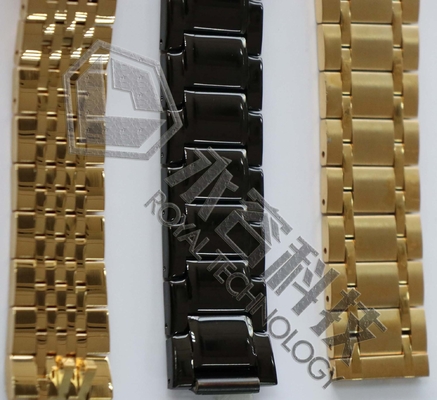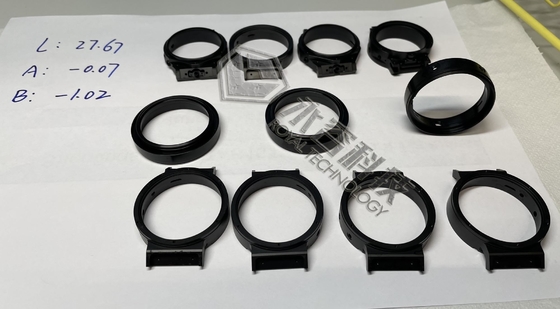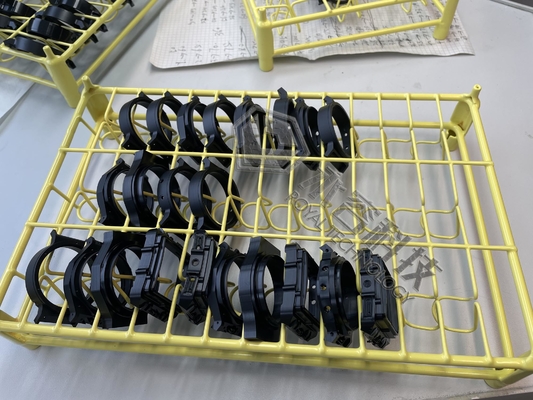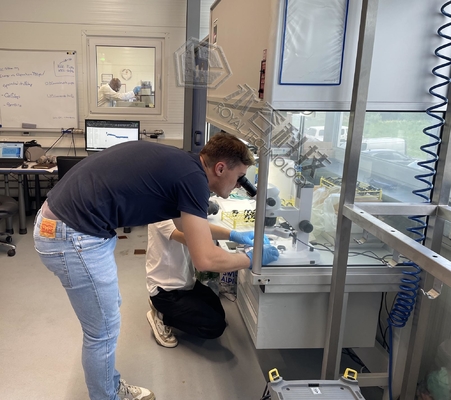
|
|






| Brand Name: | ROYAL TECHNOLOGY |
| Model Number: | RT-IP1000 |
| MOQ: | 1 |
| Price: | NEGOTIABLE |
| Payment Terms: | L/C,T/T |
| Supply Ability: | 5 sets/month |
Physical Vapor Deposition (PVD) is a widely used technique to apply protective and decorative coatings and finishes to watches and other surfaces. This cost-effective technique provides enhanced durability, scratch resistance, and aesthetic appeal. There are various PVD coatings for watches available on the market, such as:
1. DLC (Diamond-Like Carbon) Coating – DLC is a highly popular carbon-based coating that is renowned for its exceptional hardness, low friction, and great scratch resistance. It is usually available as a glossy black or matte finish, giving watches a sleek, modern look.
2. Titanium Nitride (TiN) Coating – TiN is a golden-colored PVD coating that provides luxurious appeal to watches. It offers good scratch resistance and is well-compatible with metals like stainless steel. It is often used to create gold-colored watches without the use of real gold.
3. Titanium Carbon Nitride (TiCN) Coating – This is a combination of titanium nitride and DLC that offers a gray or gunmetal color. TiCN coatings have high hardness and excellent wear and corrosion resistance, thus, they are particularly suitable for sporty and rugged watches.
4. Titanium Aluminum Nitride (TiAlN) Coating – This PVD coating includes titanium, aluminum, and nitrogen and provides watches with a gray or black appearance. TiAlN coatings have high hardness and good wear resistance, making them suitable for high-performance and tool watches.
5. Rose Gold PVD Coating – This coating is created using gold, copper, and sometimes silver, resulting in a warm, reddish-gold color. It provides an elegant look to watches.
When deciding on what PVD coating is needed, the watch manufacturer must consider the desired color, style, and performance characteristics. It is important to note that while PVD coatings enhance the durability and scratch resistance of watches, these can still gradually wear off due to extensive use.
![]()
DLC stands for Diamond-Like Carbon coating. It is a type of thin film coating that exhibits properties similar to natural diamond, such as high hardness, low friction, and chemical resistance. DLC coatings are commonly used in various industries, including automotive, aerospace, cutting tools, medical devices, and electronics.
The DLC coating is typically applied using a process called physical vapor deposition (PVD) or chemical vapor deposition (CVD). In PVD, the DLC material is vaporized in a vacuum chamber, and the vapor then condenses onto the surface of the substrate, forming a thin film. CVD involves the reaction of a carbon-containing gas with the substrate surface to deposit the DLC coating.
The DLC coating provides several benefits depending on the application:
It's worth noting that DLC coatings can vary in terms of their properties, such as hardness, adhesion, and friction coefficient, depending on the specific deposition process and parameters used.
Overall, DLC coatings offer a range of advantages and find applications in various industries where durability, low friction, and chemical resistance are desired, such as Watch components, Jewelry, and luxury metal accessories.
PVD coatings offer several advantages compared to other types of watch coatings. Here are some key advantages of using PVD coatings:
Environmental Friendliness: PVD coating is a relatively environmentally friendly process compared to other coating techniques. It is a dry process that does not produce harmful byproducts or require the use of harsh chemicals, making it a more sustainable choice.
Overall, PVD coatings offer a combination of durability, aesthetic versatility, and cost-effectiveness, making them a popular choice for watch manufacturers. They provide enhanced protection and visual appeal to timepieces, ensuring that they can withstand daily wear and maintain their appearance for an extended period.
Cathodic arc deposition and magnetron sputtering are two common methods used for DLC coating in the PVD (Physical Vapor Deposition) process. Here's a breakdown of the differences between the two techniques:
Cathodic Arc Deposition:
Magnetron Sputtering:
Both cathodic arc deposition and magnetron sputtering have their advantages and limitations. The choice of method depends on factors such as the desired coating properties, deposition rate requirements, equipment availability, and the expertise of the coating facility. Watch manufacturers may select the method that best suits their specific needs and quality standards.
PVD Vacuum Coating Machine Technical Support and Service:
| Model | RTAS1000 | RTAS1250 | RTAS1612 |
| Effective Chamber Size | Φ1000 x H1000mm | Φ1250 x H1250mm | Φ1600 x H1250mm |
| Deposition Sources |
Cylinder Arc (steered circular arc for option) + DC Sputtering Cathode + Linear Ion Source(for option) + MF cylinder sputtering cathodes |
||
|
Vacuum Pumping System ( Leybold Pumps + Turbo Molecular Pump) |
SV300B *1 set (300m³/hr) | SV300B* 1 set (300m³/hr) | SV300* 2 set (300m³/hr) |
|
WAU1001-1set (1000m³/hr) |
WAU1001-1set (1000m³/hr) |
WAU2001-1set (1000m³/hr) |
|
| TRP48*1 set (48m³/hr) | TRP60*1 set (60m³/hr) | TRP90*1 set (90m³/hr) | |
|
Turbo Molecular Pumps: 1 set (3500L/S) |
Turbo Molecular Pumps: 2 sets (3500L/S) |
Turbo Molecular Pumps: 3 sets (3500L/S) |
|
| Sputtering Power Supply | 1*24KW | 1*36KW | 2*36KW |
| Arc Power Supply | 6*5KW | 7*5KW | 9*5KW |
| Bias Power Supply | 1*24KW | 1*36KW | 1*36KW |
| Planetary Rods | 6/8 | 12/16 | 20 |
| Ultimate Vacuum | 9.0*10-4Pa (empty, clean, room temperature) | 9.0*10-4Pa (empty, clean, room temperature) | 9.0*10-4Pa (empty, clean, room temperature) |
| Cycle Time (depends on pump) | 40’~50’ depends on the substrate material and coating recipes | ||
| Working Power Requirement |
3Phase 5 lines AC380V,50HZ,55KW |
3Phase 5 lines AC380V,50HZ,110KW |
3Phase 5 lines ,AC380V,50HZ,150KW |
| Cooling Water | Recycle cooling water, industrial water chiller + EDI purified water device | ||
| Processing Gas (99.99%) | 4 ways | 4 ways | 4 ways |
| Footprint (mm) | 2000*2000*2500 | 4000*4500*3200 | 5500*5000*3200 |
| Total Weight(KGS) | 4500 | 7000 | 9000 |
| Total Power Consumption(Approx.) | 50KW | 110KW | 150KW |
| Actual Power Consumption(Approx.) | 30KW | 60KW | 70KW |
The above technical parameters are only for reference, Royal Technology reserves the right for final production based on specified applications. We provide you not only the coating machine but the total coating solutions, and turnkey-project service is available.